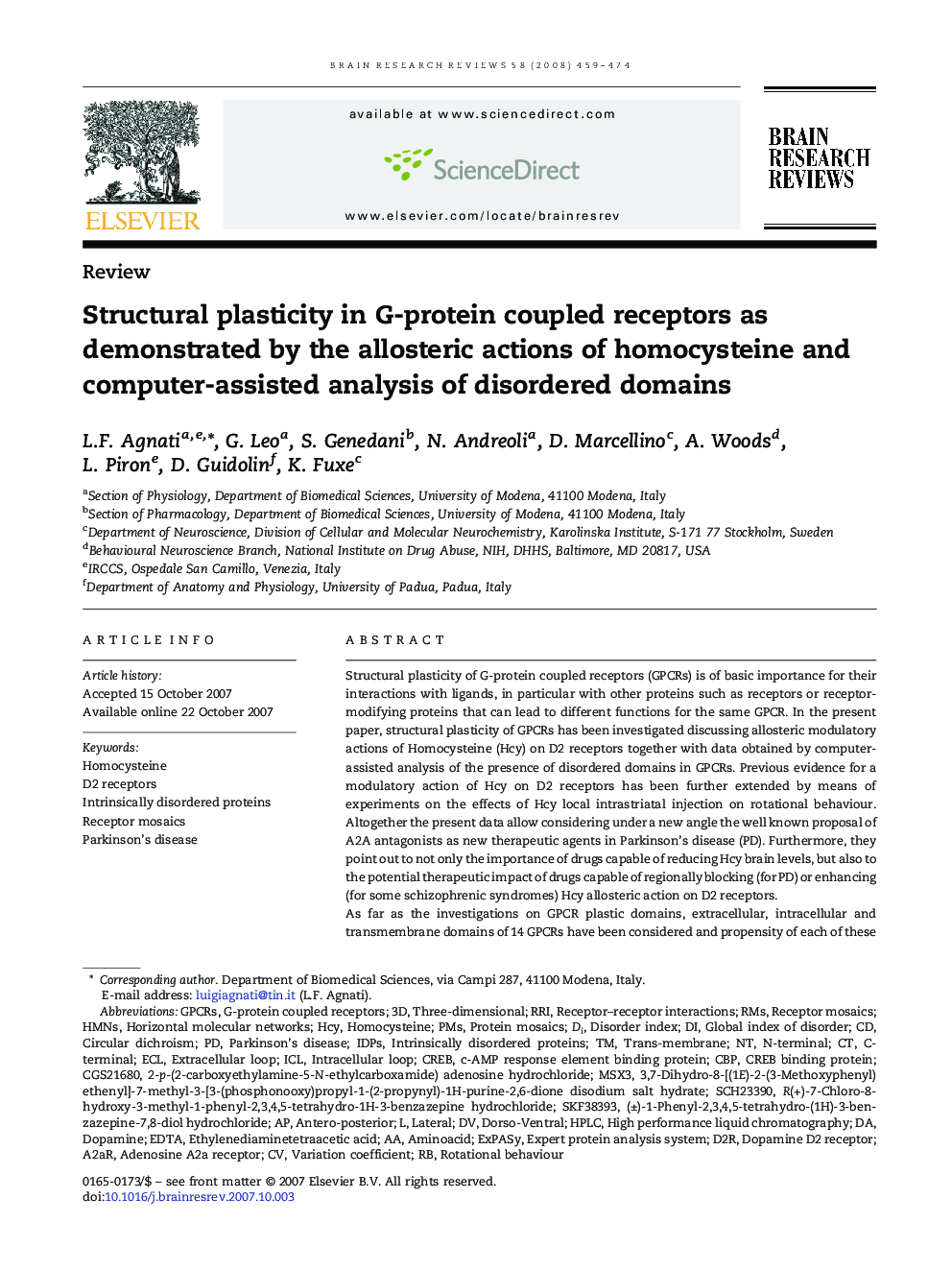| Article ID | Journal | Published Year | Pages | File Type |
|---|---|---|---|---|
| 4333875 | Brain Research Reviews | 2008 | 16 Pages |
Structural plasticity of G-protein coupled receptors (GPCRs) is of basic importance for their interactions with ligands, in particular with other proteins such as receptors or receptor-modifying proteins that can lead to different functions for the same GPCR. In the present paper, structural plasticity of GPCRs has been investigated discussing allosteric modulatory actions of Homocysteine (Hcy) on D2 receptors together with data obtained by computer-assisted analysis of the presence of disordered domains in GPCRs. Previous evidence for a modulatory action of Hcy on D2 receptors has been further extended by means of experiments on the effects of Hcy local intrastriatal injection on rotational behaviour. Altogether the present data allow considering under a new angle the well known proposal of A2A antagonists as new therapeutic agents in Parkinson's disease (PD). Furthermore, they point out to not only the importance of drugs capable of reducing Hcy brain levels, but also to the potential therapeutic impact of drugs capable of regionally blocking (for PD) or enhancing (for some schizophrenic syndromes) Hcy allosteric action on D2 receptors.As far as the investigations on GPCR plastic domains, extracellular, intracellular and transmembrane domains of 14 GPCRs have been considered and propensity of each of these domains for a structured or unstructured conformation has been evaluated by means of ad hoc computer programs. It has been shown that the N- and C-terminals as well as intracellular loop 3 have a high propensity towards an unstructured conformation, hence they are potentially very plastic domains, which can undergo easily to interactions with other ligands, particularly with other protein domains. This aspect is obviously of the greatest importance not only for the function of single GPCRs, but also for their interactions either with other receptors (receptor–receptor interactions) or, more generally, for formation of clusters of membrane associated proteins, hence of “protein mosaics”, where the GPCRs could represent the input unit of the supra-molecular device.
